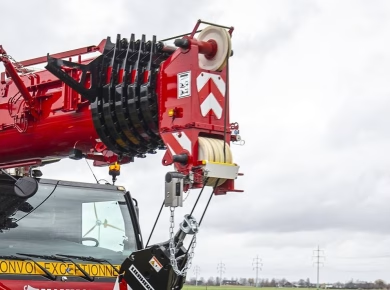It’s a typical Monday morning on site, and I’m immediately struck by the buzz of machinery and the chatter of workers gearing up for the day ahead. Amidst the organized chaos, one piece of equipment stands out as a non-negotiable in our safety arsenal: cut-resistant gloves. Often overlooked until an accident occurs, these gloves are the unsung heroes in the construction and health & safety industries. They’re not just a layer of protection; they represent a commitment to safety and professionalism that can’t be understated.
Understanding Cut-Resistant Gloves
Cut-resistant gloves are designed to protect your hands from sharp objects, reducing the risk of lacerations and puncture wounds. Made from a variety of materials, including Kevlar, steel fibers, and other high-performance composites, these gloves are engineered to withstand the rigors of tough environments.
The Importance of Cut Resistance
Every job site presents unique hazards, and it’s easy to get complacent about hand safety. A moment’s distraction can lead to serious injuries, which can be both costly and life-altering. In my experience, the right pair of cut-resistant gloves can mean the difference between a minor scrape and a significant injury requiring time off work. When you’re handling materials like glass, metal, or even certain types of wood, having that extra layer of protection is invaluable.
Choosing the Right Pair
Not all cut-resistant gloves are created equal. Selecting the right pair depends on the specific tasks at hand and the level of protection needed.
Cut Levels Explained
Cut-resistant gloves are rated on a scale from A1 to A9, with A9 offering the highest level of cut protection. Understanding these ratings is crucial. For instance, if you’re working with sharp tools or handling sheet metal, investing in A5 or A6 gloves is prudent. However, for tasks that require dexterity, such as precision assembly, you might opt for a lower cut level that still provides adequate protection without compromising your ability to handle tools effectively.
Fit and Comfort
Comfort should never be an afterthought. Ill-fitting gloves can lead to reduced grip and hand fatigue, increasing the likelihood of accidents. When trying on gloves, ensure they fit snugly but aren’t overly tight. Look for features like breathable materials and ergonomic designs that allow for flexibility.
Real-World Application
In the field, I’ve seen firsthand how cut-resistant gloves can enhance safety culture. A fellow site manager once shared a harrowing story of a worker who suffered a deep cut while handling glass panels. It was a wake-up call for our team, prompting us to assess our safety gear and protocols. After implementing mandatory cut-resistant gloves on all sites, we’ve seen a noticeable reduction in hand injuries.
Training and Compliance
It’s essential to pair the use of cut-resistant gloves with proper training. Workers must understand not only how to wear them but also when they’re necessary. Regular safety briefings that emphasize the importance of hand protection can foster a culture of safety. Compliance training should also include scenarios where gloves may fail, encouraging workers to remain vigilant and proactive about their safety.
Building a Safety Culture
Integrating cut-resistant gloves into your safety protocols is one step, but building a comprehensive safety culture requires ongoing commitment.
Encouraging Reporting and Feedback
Create an environment where workers feel comfortable reporting near misses or injuries without fear of reprimand. This can lead to valuable feedback on the effectiveness of protective gear and highlight areas needing improvement. For instance, if multiple workers express discomfort with a specific glove model, it may be time to reassess your options.
Regular Assessments and Updates
Safety standards evolve, and so do the materials and technologies used in protective gear. Periodically review your safety equipment and protocols to ensure they align with the latest industry standards. Engaging with manufacturers for demonstrations of new products can also keep your team informed about the best options available.
Conclusion
Investing in cut-resistant gloves is not just about compliance; it’s about demonstrating care for your team’s well-being. As site managers and safety professionals, we have the responsibility to provide our workers with the tools they need to stay safe. By choosing the right gloves, emphasizing training, and fostering a culture of safety, we can significantly reduce the risk of injuries on site. Remember, every injury prevented is a step toward a more efficient and productive workplace. Let’s commit to making safety a priority, one glove at a time.


